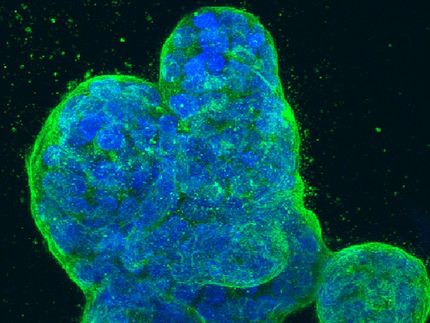Drugs in the Pipeline - An R&D Analysis
Functional Genomics Provides Easy Target Identification and Improved Drug Discovery
Advertisement
functional genomics and proteomics have been quite successful in identifying functions of potential therapeutic targets such as encoded proteins. In fact, the possibilities of identifying more than 10,000 novel target antigens in the human genome opens up exciting opportunities for the discovery of new drugs and therapeutic molecules.
"As opposed to conventional sequence homology, functional genomics adds structure-based predictions to locate gene sequences with assigned and confirmed functions. It simultaneously sifts through well-established targets to detect critical therapeutic targets," explains Rajaram Sankaran, Analyst from Technical Insights (http://www.technicalinsights.frost.com).
Additionally, functional genomics opens up the possibilities of genetically demarcating patients and predicting individual responses to drugs. This permits customised medications and dosages that improve treatment safety and efficacy in areas such as neuropsychiatry, cardiovascular medicine, endocrinology, and oncology.
An increasing number of new molecular entities (NMEs) are entering clinical trials and by 2008, a 65 per cent increase in NMEs is expected. However, almost 30 per cent of NMEs fail to clear Phase I clinical testing due to pre-clinical animal and 'ex vivo' models, which provide inaccurate human pharmacokinetic (PK) and absorption, distribution, metabolism and excretion (ADME) data.
Human targets, on the other hand, offer a holistic view of expected drug performance and improve efficacy and safety of the final drug. Following this trend, micro-dosing provides faster human bioavailability data. The significant time, cost and material savings allow quick and simple screening of drug candidates. This ensures that optimal drug candidates qualify for Phase I clinical development.
Innovative use of nanotechnology may also improve the pharmacokinetics by increasing solubility, absorption and bioavailability of active pharmaceutical ingredients. For instance, custom-wrapping active compounds with polymers create novel inclusion complexes of water-insoluble or water-soluble compounds. This also reduces toxicity, while opening up new routes for drug administration.
Cardiovascular diseases (CVD) account for an estimated 17 million annual deaths worldwide according to the World Health Organisation. In the United Kingdom, cardiovascular diseases cause more than 270,000 deaths a year. This presents a huge opportunity to the pharmaceutical industry for the discovery of new and improved chemical therapeutic agents such as adrenergic inhibitors, beta-blockers, diuretics, steroids, thiazides, vasodilators and vasopressors.
One of the most notable developments in CVD therapeutics has been the identification of the myocyte enhancer factor 2A (MEF2A) as the first gene to cause coronary heart disease in humans. The genetic mutation in the MEF2A results in weak coronary artery walls, exposing them to plaque build-up and ultimately heart attacks or sudden cardiac death.
"The MEF2A discovery is a phenomenal development as it opens a new avenue through which scientists can track the pathway that leads to coronary heart disease and heart attack," says Mr. Sankaran. "Genes in that pathway are potential targets to design new drugs for coronary artery diseases and myocardial infarction."
Prominent research into diseases of the central nervous system is also taking place, specifically for Alzheimer's. Drugs that act on brain targets called M and N receptors are likely to stimulate nerve cells for the release of extra acetylcholine, thereby promoting memory and reasoning. There also possibilities of using oestrogen as an effective treatment to enhance memory in both Alzheimer's patients and post-menopausal women.
Apart from treatments for primary Alzheimer issues such as breakdown of memory and reasoning abilities, drugs are available to alleviate the secondary symptoms such as depression, agitation, anxiety and sleep disturbances. These include conventional antidepressants, tranquillisers, anti-anxiety agents and hypnotics effective for patients with severe dementia.
Curbing side effects is another issue entering drug development considerations. The urgency to alleviate side effects can be particularly valid in the case of lifetime illnesses such as schizophrenia that require long-term antipsychotic treatment. This has catalysed research for drugs that lower motor side effects such as tardive dyskinesia.
Exciting new developments can be possible in breast cancer therapies where long-term chemotherapy necessitates drugs that alleviate harmful side-effects from over-exposure to radiation. For instance, research into haematopoietic stem cells in metastatic breast cancer patients is likely to generate new blood cells to replace those killed by chemotherapy.
Tumour necrosis factor (TNF) is a potent cytokine that stimulates a strong immune response against cancer cells. However, if delivered as a therapeutic protein, TNF is likely to cause severe side-effects. In a recent development, a gene therapy product transforms cells in the patient to naturally produce TNF, creating noticeable improvements in locally advanced pancreatic cancer patients.
Other news from the department business & finance
Most read news
More news from our other portals
See the theme worlds for related content
Topic world Gene therapy
Genetic diseases once considered untreatable are now at the center of innovative therapeutic approaches. Research and development of gene therapies in biotech and pharma aim to directly correct or replace defective or missing genes to combat disease at the molecular level. This revolutionary approach promises not only to treat symptoms, but to eliminate the cause of the disease itself.

Topic world Gene therapy
Genetic diseases once considered untreatable are now at the center of innovative therapeutic approaches. Research and development of gene therapies in biotech and pharma aim to directly correct or replace defective or missing genes to combat disease at the molecular level. This revolutionary approach promises not only to treat symptoms, but to eliminate the cause of the disease itself.























































